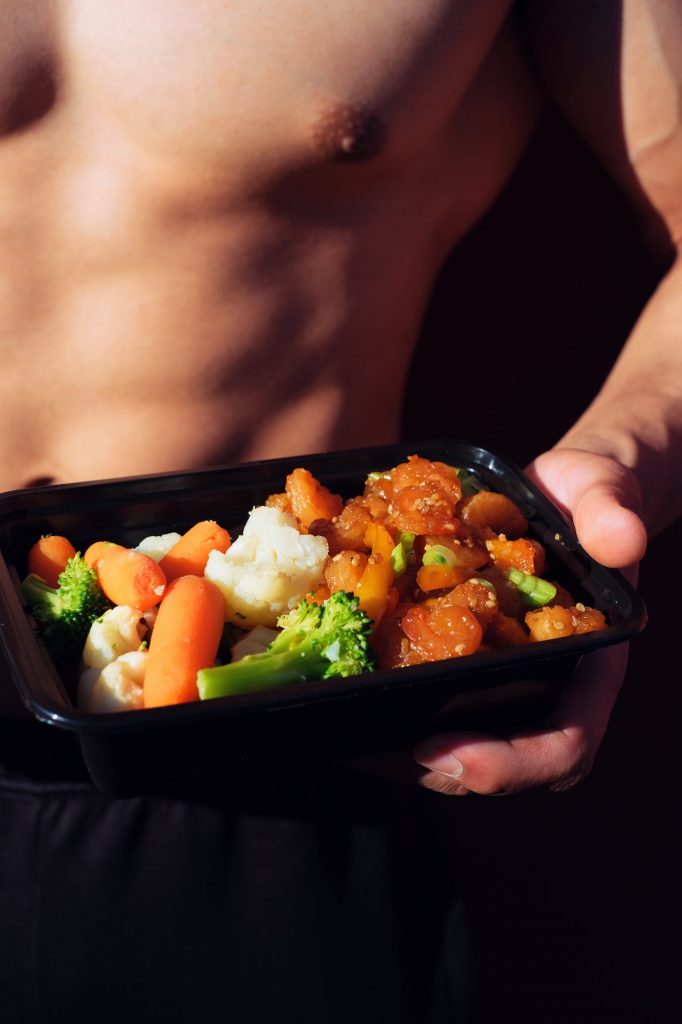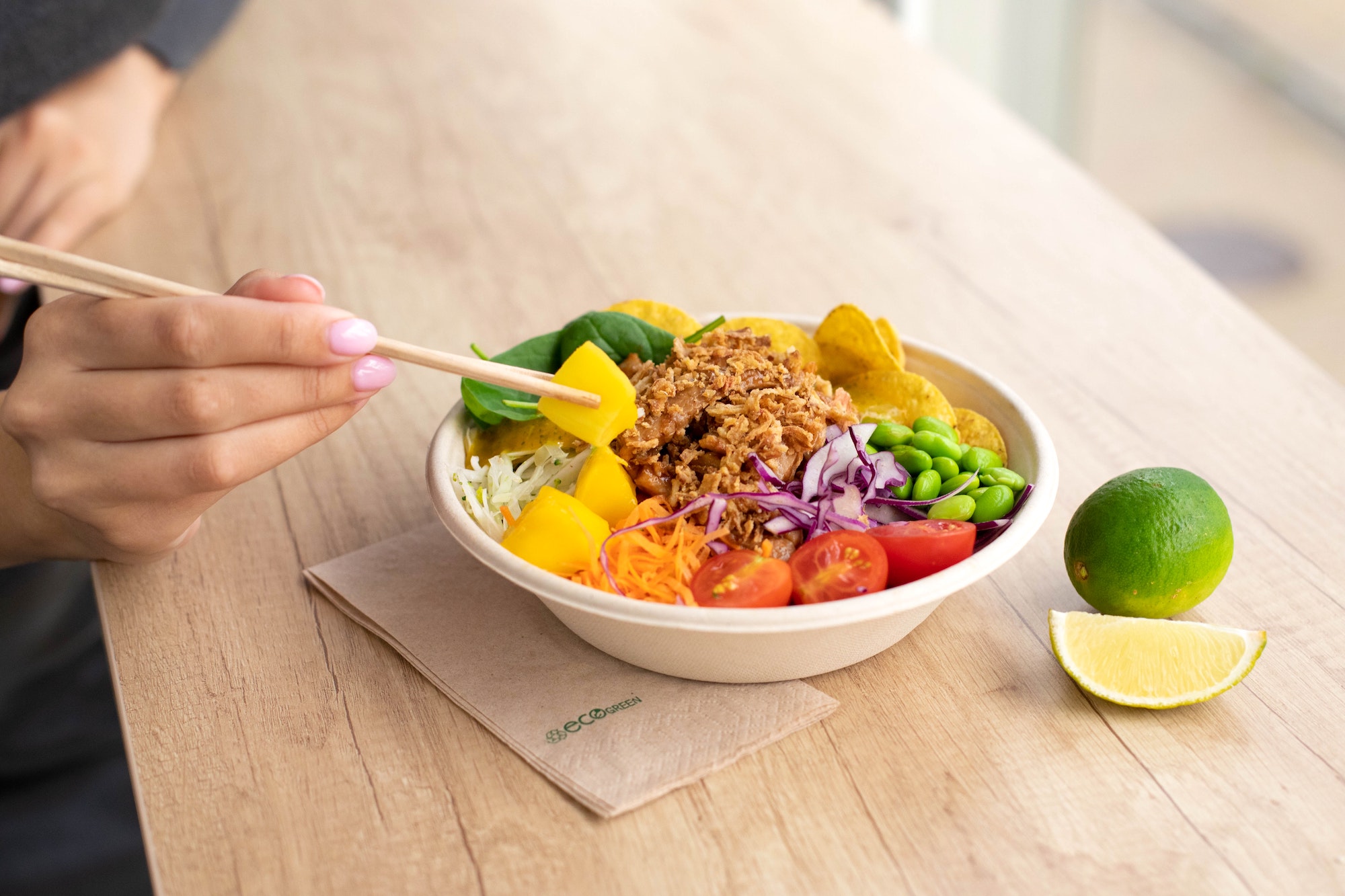The idea of going plant-based is certainly in vogue for its health benefits, athletic performance improvements, and environmental impact
I have the same lunch every day (a brown rice and lentil salad with chopped parsley, carrots, and sunflower seeds) and the same breakfast every morning (overnight rolled oats and soy milk). They’re nothing Michelin star-worthy, and after the third week I’m munching away mindlessly but always guaranteed satiation and a good deal of nourishment.
I’m a creature of habit. That’s what makes this bearable. But what I’ve noticed with this setup: I can pretty much avoid meat altogether.
There has been a consistently growing interest in plant-based eating and meat alternatives. Look no further than the recent success of Swedish oat-based milk alternative company, Oatly, to see this ballooning interest.
But as an exercising and eating population of people whose leisure activities remain online and to-order, is there any real benefit to overhauling our diets to be plant-based? What does it mean to be plant-based anyway? And do your diets need to look as boring as mine sound?
To start, what is plant-based eating?
Kayth Barro, clinical dietitian and counselor at Chong Hua Mandaue City, Cebu, explains, “Eating plant-based does not mean you can’t eat meat. It means your meals are mostly plants: vegetables, whole grains, and fruits.”
To be plant-based is to be the relaxed relative of the vegan. I understand though that in a growing lexicon of terminologies, describing how we eat things can get too complicated. To try and stick with the basics, a Harvard Health publication names four vegetarian diet varieties with their corresponding diet inclusions:
- Semi-vegetarian or flexitarian: eggs, dairy foods, and occasionally meat, poultry, fish, and seafood.
- Pescatarian: eggs, dairy foods, fish, and seafood, but no meat or poultry.
- Vegetarian (sometimes referred to as lacto-ovo vegetarian): eggs and dairy foods, but no meat, poultry, fish, or seafood.
- Vegan: no animal foods (bye yogurt and ice cream!)
Off the bat, I’m not going to present a moral or performance-backed reason to pick any of the four diets. Each body is unique so the decision you make will come down to what makes you feel your best.
That being said, how could a plant-based diet make you feel?
Barro explains that a plant-based diet carries a wide range of benefits found in edible plants—essential nutrients like vitamins, minerals, phytochemicals, antioxidants, and especially fiber. “Fiber is present in all unprocessed plant foods. It is what makes up the structure of the plant, and if you eat more of it you access a whole host of benefits.”
These benefits range from improving gut health and supporting the immune system to reducing inflammation, lowering cholesterol, and even stabilizing blood sugar. Aside from the enjoyable benefit of regular bowel movements, the sparkle of this diet comes primarily from what it prevents: damage to the cells in the body and other inflammatory diseases such as heart disease.
Sounds like I’m going to keep my boring lunch salad.
If time permits you to cook, dedicate one night per week to preparing a vegetarian meal. Think of the colors, the different vegetables teeming with antioxidants and nourishing components, and try to have fun with it
What if you’re an athlete?
In the last months, I watched a popular Netflix documentary called The Game Changers, presented by James Cameron, Arnold Schwarzenegger, Jackie Chan, Lewis Hamilton, Novak Djokovic, and Chris Paul, basically telling you the key to peak athletic performance and recovery is nestled in the arms of a completely plant-based diet.
The film was so firm in its prescriptive nature that I grew almost afraid of eating meat.
But it had a point that seemed to resonate with a growing body of research. One article affirms that plant-based diets have potential physiological advantages aside from the cardiovascular ones.
The authors of the study write, “physiological effects… include a leaner body mass, ease of glycogen storage, improved tissue oxygenation, reduced oxidative stress, and reduced inflammation.” How do these help athletes?
Neal Barnard, MD, FACC, president of the Physicians Committee for Responsible Medicine and a bit of a legend in my plant-based eating research lists the following benefits athletes gain from going plant-based:

Less inflammation
“Meat consumption and high cholesterol levels exacerbate inflammation, which can result in pain and impair athletic performance and recovery.” So for quicker recovery, add greens and grains, and skip the steaks (but don’t ditch them if you love them).
Better blood flow
Given that a plant-based diet is lower in saturated fat and cholesterol, the viscosity and thickness of blood is likely to improve. Per Barnard, this allows more oxygen to reach muscles, improving athletic performance. In addition, a plant-based diet affects blood flow as it improves arterial flexibility and diameter.
Fewer free radicals
As we learned from Barro, plant-based diets have more antioxidants available than meat-based ones. These help neutralize free radicals to reduce muscle fatigue while improving athletic performance and recovery.
Better endurance
Barnard reasons that “plant-based diets, which are typically low in fat and high in fiber, can reduce body fat. Reduced body fat is associated with increased aerobic capacity–the ability to use oxygen as fuel for exercise.”
Protection from heart disease
Even athletes are not immune to heart disease: Surprisingly, one 2017 study in the United Kingdom found coronary plaques in 44 percent of middle-aged and older endurance athletes engaged in cycling or running, compared with 22 percent of sedentary controls. Barnard informs us that a plant-based diet keeps an athlete’s heart strong by reducing blood pressure and cholesterol, and pertinently, reversing plaque.
In sum, have half your plate stacked with veggies, get your exercise in, and remain in touch with the food you’re eating—and how it makes you feel
How can we move towards plant-based eating?
We can all benefit from these small tweaks but not all can stomach the idea of eating the same darn rice bowl day in, day out. So here are some tips to help dip your toes into the plant-based universe:
Think about meat differently
Rather than the centerpiece of your daily meal, think of it as the side dish.
Start with one vegetarian meal per week
If time permits you to cook, dedicate one night per week to preparing a vegetarian meal. Think of the colors, the different vegetables teeming with antioxidants and nourishing components, and try to have fun with it. As Barro tells her clients, “The tongue is trainable. Food is an art, so be creative.”
Get the grains in at breakfast
Strictly speaking, lunch or dinner is perfectly fine too. But overnight oats, quinoa or barley are stunning sweet meals once topped with a healthy helping of fruit and a dollop of peanut butter.
When you go for meat, go for the good stuff
This will always come down to preference, but burgers can be healthy. “Make your burgers at home using healthier and fresher ingredients,” says Barro. Go for leaner cuts of meat and healthier methods of preparation.
Prepare your body to absorb iron
Iron is essential in making red blood cells. While it is abundant in leafy green vegetables, it’s not as easy to absorb as that found in meat. Vitamin C-rich foods like citrus fruits, peppers, broccoli, and cauliflower can help with iron absorption. I personally like to squeeze lemon into water and sip on that throughout the day.
Make sure to get enough vitamin B12
This vitamin is essential in making red blood cells and providing energy. It’s typically found in lean meat, fish, seafood, and egg. It can also be found in fortified cereals, soya drinks, yogurt, and non-dairy milk. Though supplements are available, consulting your doctor is advised before making that switch.
Pick the whole grains
Regular pasta, white bread, and white rice do come from plants but are not made from whole grains. To get the maximum fiber-rich benefits out of a plant-based diet, select 100 percent whole wheat pasta and bread, and go for brown rice.
But eat with gratitude
I only have one personal rule with my diet aside from generally eating healthily and eating plenty of vegetables day-to-day: If food is offered to me, I receive it with both hands.
So if I’m out with friends, at a birthday party, or about to sink my otherwise beer-bottle-wielding hands into a tray of nachos, I do so with gratitude and with the mind of completely enjoying it. Food is there to nourish us physically and mentally.
And while there are plenty of images out there telling us to eat a very specific sort of way to reach a very specific level of performance or conform to a very specific appearance, these times call us to keep both our bodies and our minds well.
In sum, have half your plate stacked with veggies, get your exercise in, and remain in touch with the food you’re eating—and how it makes you feel.
And gosh, do my oats make me happy.












































